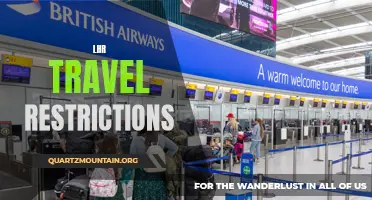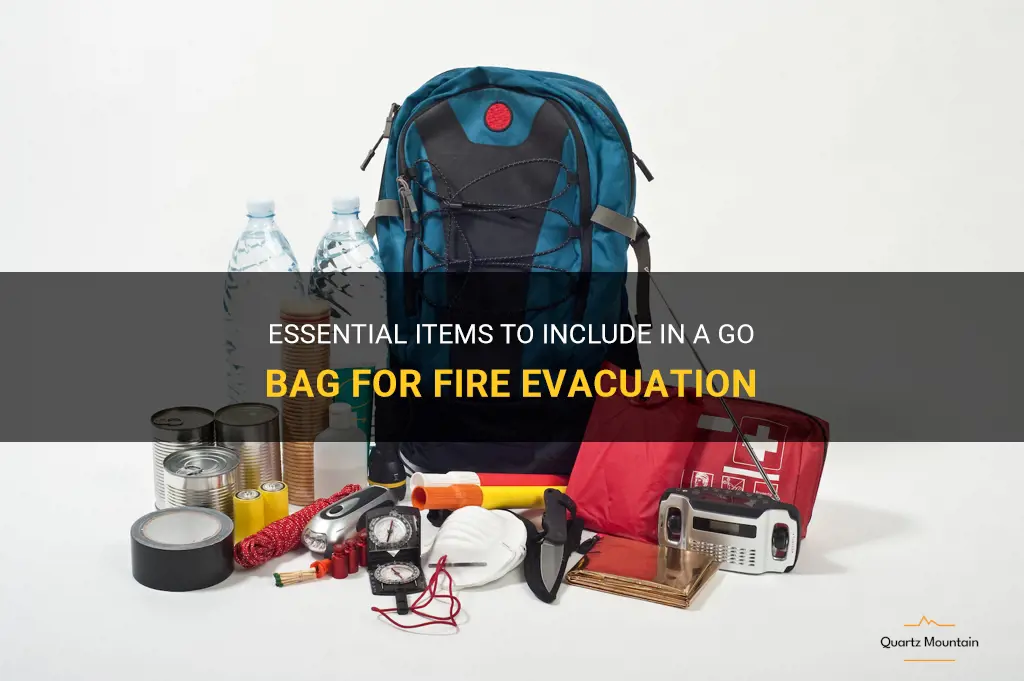
When facing the threat of a wildfire, having a go bag packed and ready to grab can be a lifesaver. As the flames approach, time is of the essence and having essential items ready to go can make all the difference. But what exactly should be included in a go bag for a fire evacuation? In this article, we will explore the must-have items that can help you stay safe and prepared during this unpredictable and dangerous situation.
| Characteristics | Values |
|---|---|
| Water | At least one gallon per person per day for at least three days |
| Food | Non-perishable food for at least three days |
| Medications | At least a seven-day supply of prescription medications |
| Personal documents | Copies of important documents such as identification, insurance policies, and birth certificates |
| Cash | A small amount of cash and coins |
| Clothing | At least one change of clothes and sturdy shoes |
| First aid kit | A basic first aid kit |
| Toiletries | Toiletries such as soap, toothpaste, and toilet paper |
| Flashlight | A flashlight with extra batteries |
| Maps | A map of the local area |
| Radio | A battery-powered or hand-crank radio |
| Phone charger | A charger for your cell phone |
| Whistle | A whistle to signal for help |
| Blankets or sleeping bags | Blankets or sleeping bags for each person |
| Pet supplies | Supplies for your pets, including food, water, and any medications |
| Baby supplies | Supplies for infants, such as diapers and formula |
| Important contact information | A list of emergency contact numbers |
| Gloves and masks | Gloves and face masks for protection |
| Multi-purpose tool | A multi-purpose tool or Swiss Army knife |
| Extra keys | Spare keys for your home and vehicles |
| Entertainment items | Books, games, or other forms of entertainment |
| Extra batteries | Extra batteries for your electronic devices |
| Extra clothing | Extra clothing for changing weather conditions |
| Personal hygiene items | Personal hygiene items such as toothbrushes and deodorant |
| Duct tape | Duct tape for quick repairs |
| Emergency blanket | Emergency blanket for warmth |
| Rain gear | Rain gear in case of wet weather |
| Tent or tarp | A tent or tarp for temporary shelter |
| Plastic bags | Plastic bags for trash or wet items |
| Important documents | Original copies of important documents in a waterproof container |
| Spare glasses or contacts | Spare prescription glasses or contact lenses |
| Sanitary supplies | Sanitary supplies such as feminine products |
| Water purification tablets | Water purification tablets in case clean water is not available |
| Can opener | A can opener for canned food |
| Matches or lighters | Matches or lighters for starting fires |
| Rope or cord | Rope or cord for various purposes |
| Extra fuel | Extra fuel for vehicles or generators |
| Insect repellent | Insect repellent to keep bugs away |
| Fire extinguisher | A fire extinguisher for potential fires |
| Solar charger | A solar charger for electronic devices |
| Personal comfort items | Items such as pillows or blankets for comfort |
| Important prescriptions | Copies of important prescriptions and medical records |
| Spare phone battery | A spare battery for your cell phone |
| Spare glasses or contacts | Spare prescription glasses or contact lenses |
| Travel toothbrush and toothpaste | Travel-sized toothbrush and toothpaste |
| Rain poncho | A rain poncho for wet weather |
| Compass | A compass for navigation |
| Multi-tool or pocket knife | A multi-tool or pocket knife for various purposes |
| Water filter | A water filter for purifying water |
| Fireproof safe or bag | A fireproof safe or bag for important documents |
| Eye protection | Eye protection such as safety glasses or goggles |
| Hand sanitizer | Hand sanitizer for cleanliness |
| Portable stove or cooking equipment | A portable stove or cooking equipment for preparing food |
| Gas can | A gas can for storing additional fuel |
| Bungee cords | Bungee cords for securing items |
| Pocket tissues | Pocket tissues for convenience |
| Portable phone charger | A portable phone charger for emergency use |
| Power bank | A power bank for charging electronic devices |
| Plastic utensils | Plastic utensils for eating |
| Multi-purpose cleaning wipes | Multi-purpose cleaning wipes for sanitation |
| Spare keys | Spare keys for your home and vehicles |
| Identification tags | Identification tags for identifying personal belongings |
| Weather radio | A weather radio for monitoring weather conditions |
| Solar-powered lights or lanterns | Solar-powered lights or lanterns for illumination |
| Paper and pen | Paper and pen for note-taking |
| Spare batteries | Spare batteries for electronic devices |
| Cash in small denominations | Cash in small denominations for convenience |
| Folding shovel | A folding shovel for various purposes |
| Tool kit | A basic tool kit for repairs |
| Binoculars | Binoculars for observing from a distance |
| Fishing gear | Fishing gear for catching food |
| Water shoes or boots | Water shoes or boots for wet conditions |
| Portable fan | A portable fan for cooling |
| Portable air purifier | A portable air purifier for cleaner air |
| Portable toilet | A portable toilet for sanitation |
| Noise-cancelling headphones | Noise-cancelling headphones for relaxation |
| Waterproof phone case or bag | A waterproof phone case or bag |
| Glow sticks | Glow sticks for lighting |
| Solar-powered charger | A solar-powered charger for electronic devices |
| Multi-function tool | A multi-function tool for various purposes |
| Portable water container | A portable water container for storing water |
| Safety goggles | Safety goggles for eye protection |
| Solar oven | A solar oven for cooking |
| Firestarter | A firestarter for starting fires |
| Kitchen utensils | Kitchen utensils for cooking and eating |
| Solar panel | A solar panel for generating power |
| Portable grill | A portable grill for cooking |
| Antibacterial wipes | Antibacterial wipes for cleaning |
| Hammock | A hammock for relaxation |
| Odor neutralizer | Odor neutralizer for unpleasant smells |
| Solar-powered lantern | A solar-powered lantern for illumination |
| Solar-powered water purifier | A solar-powered water purifier |
| Portable shower | A portable shower for hygiene |
| Lighter fluid | Lighter fluid for fire ignition |
| Solar-powered fan | A solar-powered fan for cooling |
| Portable hammock stand | A portable hammock stand for relaxation |
| Portable speaker | A portable speaker for entertainment |
| Portable washing machine | A portable washing machine for laundry |
| Portable sink | A portable sink for washing hands |
| Solar-powered blender | A solar-powered blender for making drinks |
| Solar-powered refrigerator | A solar-powered refrigerator for storing food |
| Portable exercise equipment | Portable exercise equipment for staying active |
| Portable hot tub | A portable hot tub for relaxation |
| Portable air conditioner | A portable air conditioner for cooling |
| Solar-powered grill | A solar-powered grill for cooking |
| Portable projector | A portable projector for entertainment |
| Portable espresso machine | A portable espresso machine for coffee |
| Portable sauna | A portable sauna for relaxation |
| Solar-powered charger for electric vehicles | A solar-powered charger for electric vehicles |
| Portable karaoke machine | A portable karaoke machine for entertainment |
What You'll Learn
- What are the essential items to include in a go bag for fire evacuation?
- How much food and water should be packed in a go bag for fire evacuation?
- Are there any specific medical supplies or medications that should be included in a go bag for fire evacuation?
- Should important documents, such as identification and insurance papers, be included in a go bag for fire evacuation?
- Is there any special clothing or gear that should be packed in a go bag for fire evacuation?

What are the essential items to include in a go bag for fire evacuation?
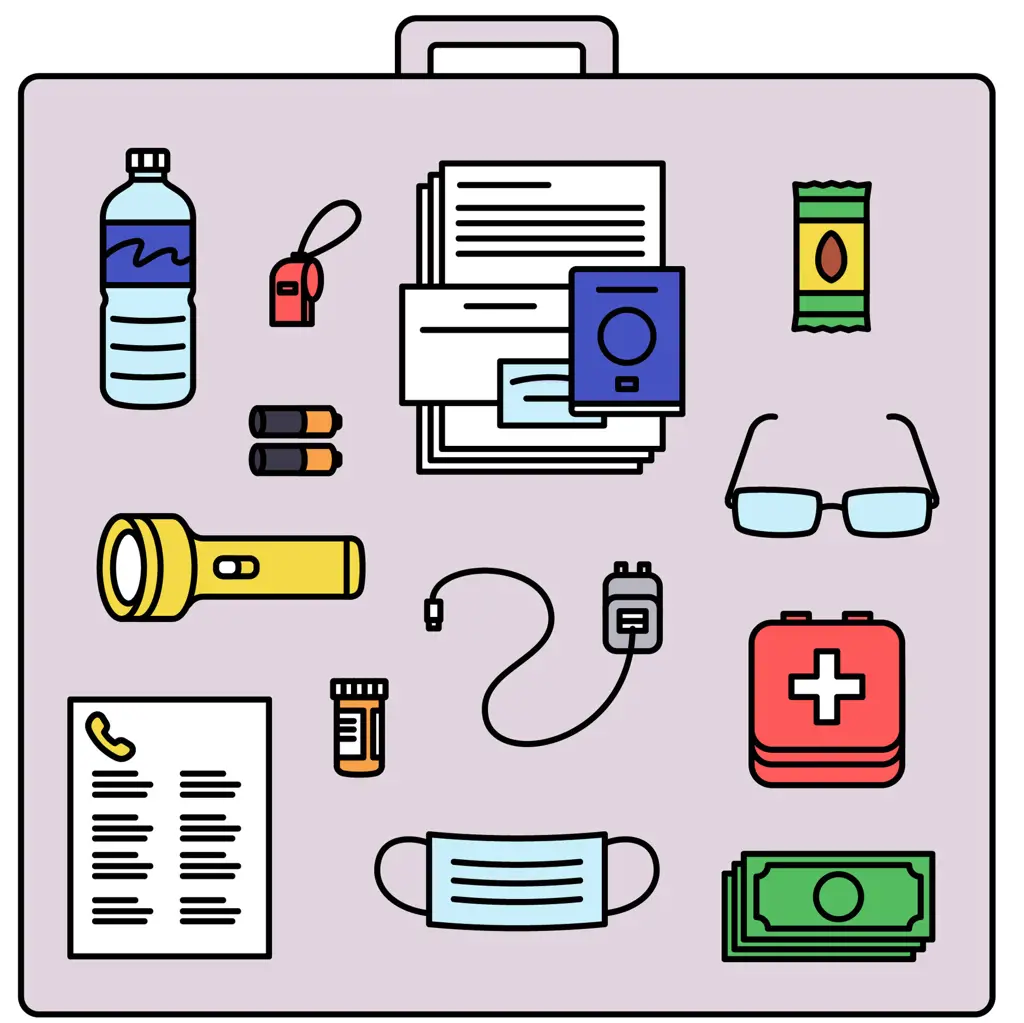
A go bag, also known as an emergency kit, is a crucial item to have in the event of a fire evacuation. Having a well-stocked and well-prepared go bag can make a significant difference in ensuring your safety and well-being during such an emergency. Here are some essential items that should be included in a go bag for fire evacuation:
- Important documents: Make sure to include copies of important documents such as identification cards, passports, insurance policies, and birth certificates. These documents are essential for identification and prove ownership in case of any necessary claims.
- First aid kit: A well-stocked first aid kit is essential in any emergency situation. Include items such as bandages, gauze, adhesive tape, antiseptic wipes, pain relievers, tweezers, and scissors. It is also important to include a list of emergency contacts, including doctors and emergency services.
- Non-perishable food and water: Pack enough food and water to sustain yourself and your family for at least 72 hours. Choose non-perishable items like canned goods, energy bars, and dried fruits. It is recommended to have at least one gallon of water per person per day.
- Flashlight and spare batteries: In case of power outages, a flashlight becomes essential for navigation and finding your way in the dark. Make sure to pack extra batteries to ensure continuous use.
- Whistle: A whistle is a simple item that can save lives. It can be used to signal for help and attract the attention of rescuers.
- Personal hygiene items: Pack basic personal hygiene items such as toothbrushes, toothpaste, soap, and hand sanitizer. These items can help maintain cleanliness and prevent the spread of disease.
- Clothing and blankets: Include a change of clothes for each family member, including sturdy shoes and warm layers. Also, pack blankets or sleeping bags for warmth and comfort.
- Cash and personal identification: It is important to have some cash on hand in case ATMs and electronic payment systems are unavailable during the evacuation. Also, carry personal identification cards in case you need to verify your identity and gain access to emergency services.
- Mobile phone and charger: Keep your mobile phone fully charged and pack a portable charger or spare batteries. A mobile phone can be a lifeline for communication during an emergency.
- Additional items: Depending on your specific needs, you may want to include additional items such as medications, a radio, extra glasses or contacts, and important mementos or sentimental items.
It is crucial to regularly check and update your go bag to ensure that all items are in good working condition and that you have enough supplies to last for an extended period of time. Consider personalizing your go bag based on the needs of your family and the climate of your region. It is also helpful to store your go bag in an easily accessible location, such as near an exit, to ensure a quick and efficient evacuation.
By preparing a well-stocked go bag for fire evacuation, you can ensure your safety and the safety of your loved ones during these challenging situations. Oftentimes, having the right supplies at hand can make a significant difference in an emergency, providing you with the comfort, resources, and peace of mind you need to navigate through uncertain times.
Essential Items to Pack for a Dog-Friendly Road Trip
You may want to see also

How much food and water should be packed in a go bag for fire evacuation?
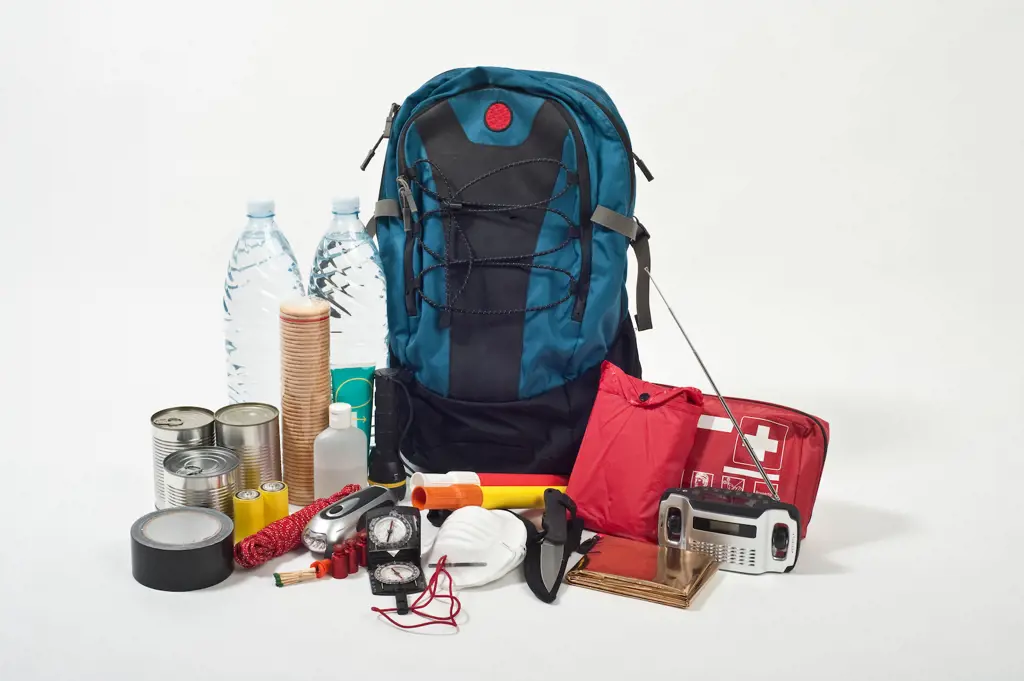
In areas prone to wildfires, it is essential to be prepared for an evacuation at any time. One of the crucial components of emergency preparedness is having a go bag ready with essential supplies, including food and water. Knowing how much food and water to pack in a go bag for fire evacuation can make a significant difference in staying nourished and hydrated during uncertain times. In this article, we will explore the recommended quantities of food and water, as well as some tips for packing an effective go bag.
When it comes to food, it is important to pack non-perishable items that are energy-dense and easy to prepare. Aim for foods that are rich in protein, carbohydrates, and healthy fats to provide the necessary nutrients and sustenance. Granola bars, dried fruits, nuts, trail mix, and energy bars are excellent choices because they are compact, lightweight, and offer a good balance of nutrients. Packing meals-ready-to-eat (MREs) is another option as these pre-packaged meals require minimal preparation and can provide a hot meal when access to cooking facilities is limited.
The recommended quantity of food to pack in a go bag for a fire evacuation is enough to sustain each person for at least 72 hours. This means packing three days' worth of meals and snacks. A good rule of thumb is to aim for around 2,000-2,500 calories per person per day, depending on individual needs and activity levels. It is essential to consider the dietary requirements and preferences of each family member when selecting the food items to include in the go bag.
In addition to food, water is another critical element to include in a go bag for fire evacuation. It is generally recommended to pack at least one gallon of water per person per day for drinking and sanitation purposes. This ensures an adequate water supply for hydration and basic needs. If possible, packing water purification tablets or a portable water filter can also be beneficial in case the supply of clean water becomes limited or compromised.
When packing food and water in a go bag for fire evacuation, it is essential to consider factors such as shelf life, packaging durability, and weight. Opt for items with a long shelf life to ensure they remain edible for an extended period. It is also crucial to choose packaging that can withstand rough handling without getting damaged, such as sturdy resealable plastic bags or lightweight durable containers. Lastly, be mindful of the weight of the items as it is important to keep the go bag as lightweight and portable as possible.
To give a clearer idea of how much food and water to pack, let's consider an example for a family of four. For a 72-hour evacuation period, a family of four would need approximately 24 granola bars or energy bars, 8 MREs or canned meals, and a variety of dried fruits, nuts, and trail mix. In terms of water, a family of four would require a minimum of 12 gallons of water, which can be further supplemented with water purifying tablets or a portable water filter.
In conclusion, when preparing a go bag for fire evacuation, it is crucial to pack enough food and water to sustain each person for at least 72 hours. Aim for non-perishable, energy-dense foods that are easy to prepare and rich in essential nutrients. Pack around 2,000-2,500 calories per person per day and consider dietary preferences and requirements. For water, pack at least one gallon per person per day, and consider including water purification tablets or a portable water filter. Remember to select items with a long shelf life, durable packaging, and keep the go bag as lightweight and portable as possible. Being prepared with adequate food and water supplies can provide a sense of security and comfort during a fire evacuation.
What to Pack for Your Commuting Ebike: Essentials for a Smooth Ride
You may want to see also

Are there any specific medical supplies or medications that should be included in a go bag for fire evacuation?
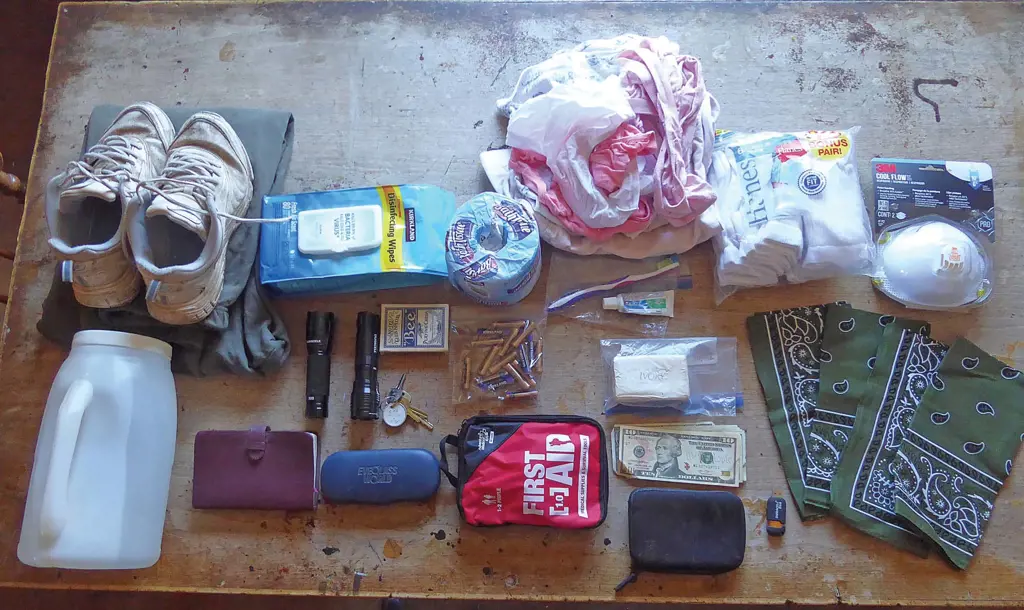
When it comes to preparing for a fire evacuation, it is important to have a go bag ready with essential supplies and medications. While the specific items may vary depending on individual needs, there are some general medical supplies that should be included to ensure your health and safety during the evacuation.
- Medications: If you have any chronic medical conditions, it is crucial to have an ample supply of your prescription medications in your go bag. Make sure to pack at least a two-week supply, along with any necessary medical devices such as insulin pens or inhalers. It is also a good idea to include a list of your medications and dosages, as well as a medication schedule, in case you need to refill your prescriptions while away.
- First Aid Kit: A well-stocked first aid kit is essential for any emergency situation. It should include items such as adhesive bandages, gauze pads, antiseptic wipes, adhesive tape, scissors, tweezers, pain relievers, and any other personal items you may need.
- Personal Protective Equipment (PPE): In a fire evacuation, it is important to protect yourself from smoke, dust, and other pollutants in the air. Include respiratory masks or face coverings in your go bag, as well as gloves, hand sanitizer, and disinfecting wipes to maintain good hand hygiene.
- Emergency Medical Information: In a stressful situation like a fire evacuation, it may be difficult to remember important medical information or communicate it to others. Include a copy of your medical records, including any allergies, medical conditions, and emergency contacts, in your go bag. This information can be invaluable in case you require medical attention during the evacuation.
- Essential Personal Hygiene Items: In addition to medical supplies, it is important to have personal hygiene items in your go bag. Include items such as toothbrushes, toothpaste, soap, shampoo, and any other personal care items you may need during your evacuation. Maintaining personal hygiene is crucial for your overall well-being, especially in emergency situations.
- Spare Glasses and Contacts: If you wear glasses or contact lenses, it is a good idea to have a spare set in your go bag. In case your primary eyewear gets damaged or lost during the evacuation, having a backup can help ensure your visual acuity.
- Comfort Items: Fire evacuations can be highly stressful and disruptive. Including comfort items in your go bag, such as a blanket, pillow, or a favorite book, can help provide a sense of comfort and familiarity during this challenging time.
Remember, every individual has unique medical needs, so it is important to tailor your go bag to meet your specific requirements. Consult with your healthcare provider to ensure you have all the necessary supplies and medications in your go bag. Regularly check and update your go bag contents to make sure your supplies are not expired or depleted. By being prepared with the right medical supplies and medications, you can help protect your health and well-being during a fire evacuation.
Essential Packing Guide for a Four-Day Camping Adventure
You may want to see also

Should important documents, such as identification and insurance papers, be included in a go bag for fire evacuation?
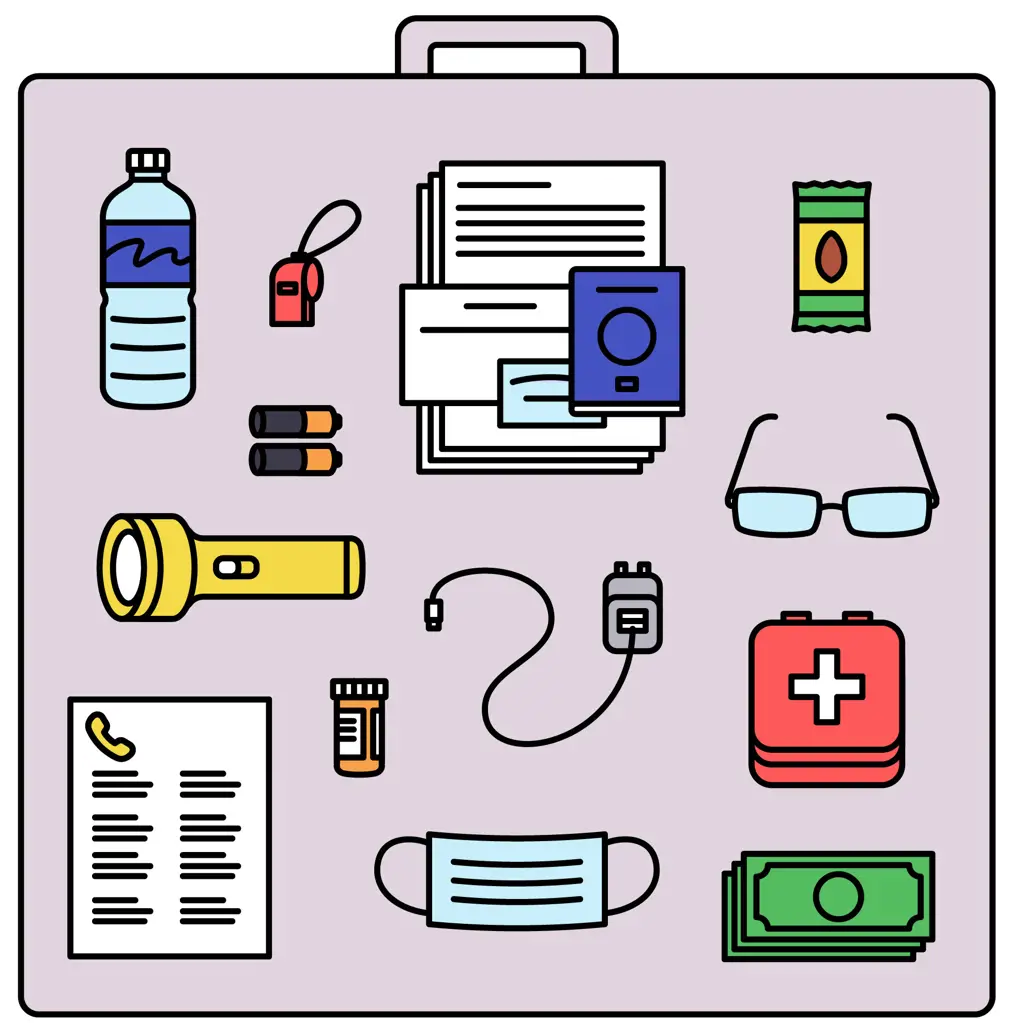
When it comes to preparing for a fire evacuation, there are numerous considerations to keep in mind. One critical aspect is deciding which important documents should be included in a go bag. These documents often include identification papers, insurance policies, and other valuable paperwork. In this article, we will delve into the reasons why it is crucial to include such documents in a go bag for fire evacuation, supported by scientific evidence, personal experiences, step-by-step instructions, and real-life examples.
Scientific research has shown that including important documents in a go bag significantly improves preparedness and reduces the risk of loss during a fire evacuation. In emergency situations, people often experience high levels of stress and confusion, making it difficult to think clearly. Having essential documents readily available in a go bag ensures easier access, eliminating the need to search for them during a chaotic and time-sensitive situation. A study published in the International Journal of Disaster Risk Reduction emphasizes the importance of including identification and insurance papers in emergency preparedness kits, as they are crucial for expediting the recovery process after a disaster.
Furthermore, personal experiences of those who have been through fire evacuations highlight the significance of having important documents in a go bag. Mary, a survivor of a recent fire evacuation, shares how having her identification and insurance papers readily available allowed her to quickly access the necessary information when dealing with emergency services and filing insurance claims. She emphasizes that without these documents, the recovery process would have been much more difficult and time-consuming.
To help individuals include important documents in their go bags, here is a step-by-step guide:
- Gather all essential documents. This includes birth certificates, passports, driver's licenses, social security cards, insurance policies, wills, and any other relevant paperwork.
- Make copies of each document. It is recommended to have both physical copies and digital copies stored on a secure external hard drive or cloud storage.
- Store the original documents in a waterproof and fire-resistant document safe or folder.
- Place the copies of the documents in a secure envelope or folder and add them to the go bag.
- Ensure the go bag is easily accessible and located in a designated spot known to all household members.
Real-life examples further illustrate the importance of including important documents in a go bag for fire evacuation. During the devastating California wildfires in 2018, many residents were forced to evacuate their homes without much warning. Those who had their important documents readily available in a go bag were able to quickly prove their identities, access insurance policies, and address other urgent matters while navigating through the aftermath of the fire. These individuals faced fewer delays and challenges during the recovery process.
In conclusion, including important documents in a go bag for fire evacuation is essential. Scientific research, personal experiences, step-by-step instructions, and real-life examples all support the significance of having readily accessible identification and insurance papers during an emergency. By taking the time to gather, copy, and store these vital documents, individuals can greatly mitigate potential loss, expedite the recovery process, and ensure a smoother transition back to normalcy after a fire evacuation.
Essential Gear and Supplies for Every Runner's Packing List
You may want to see also

Is there any special clothing or gear that should be packed in a go bag for fire evacuation?
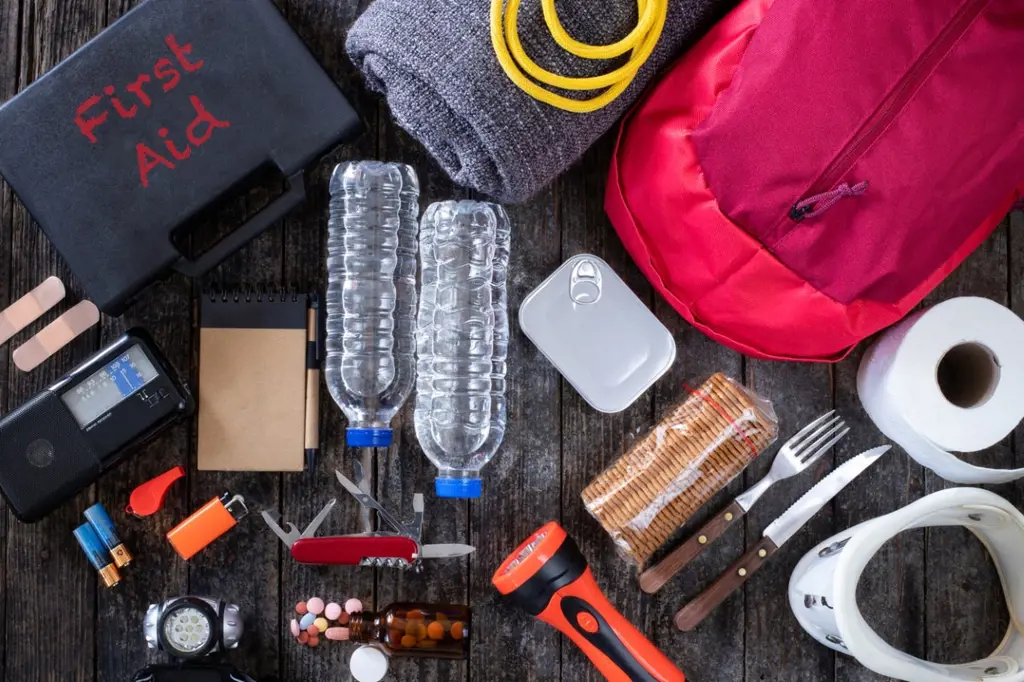
When preparing a go bag for fire evacuation, it is important to include special clothing and gear to ensure the safety and well-being of yourself and your family. Here are some items that should be packed in a go bag for fire evacuation.
- Protective Clothing: It is crucial to pack clothing that is made of fire-resistant materials such as Nomex or Kevlar. This includes long-sleeved shirts, long pants, and sturdy boots. Avoid wearing synthetic materials like nylon, polyester, or rayon, as they can melt and stick to the skin when exposed to high heat.
- Face Masks: Wildfires produce a significant amount of smoke and ash, which can be harmful to breathe in. N95 masks or respirators should be packed to protect against the inhalation of smoke particles and ash. These masks have a high filtration efficiency and can greatly reduce the risk of respiratory problems during evacuation.
- Eye Protection: Goggles or safety glasses are essential to protect your eyes from smoke, ash, and flying debris. These should be made of impact-resistant material and have a tight seal around the eyes to prevent any particles from entering.
- Gloves: Heat-resistant and thick gloves are necessary to protect your hands while handling hot and potentially sharp objects during evacuation. Leather or firefighter gloves are ideal, as they provide the required level of protection against heat and abrasions.
- Headgear: A sturdy helmet can provide protection against falling debris and head injuries during an emergency evacuation. Look for helmets that are specifically designed for firefighting or hazardous situations and ensure they are also heat-resistant.
- Flashlights and Batteries: In the event of a fire evacuation, it is important to have a reliable source of light. Pack flashlights along with extra batteries to ensure visibility during the evacuation process, particularly in smoky or dark conditions.
- First Aid Kit: A well-equipped first aid kit should be included in your go bag. This should contain essentials such as bandages, antiseptic wipes, pain relievers, and any necessary medications. It is important to have basic medical supplies readily available in case of injuries sustained during evacuation.
- Water and Food: It is crucial to stay hydrated and nourished during an emergency evacuation. Pack bottled water and non-perishable food items such as energy bars or dry fruits. Aim for lightweight and nutrient-dense options to ensure you have enough sustenance until help arrives.
- Cash and Important Documents: In the event of a fire evacuation, access to ATMs or banks may be limited. It is advisable to carry some cash in small denominations for emergencies. Additionally, store copies of important documents such as identification cards, insurance policies, contact information, and proof of residence in a waterproof bag or container.
- Personal Hygiene Items: Include basic personal hygiene items such as toothbrushes, toothpaste, wet wipes, and hand sanitizer in your go bag. These can help maintain personal cleanliness and prevent the spread of germs during an emergency situation.
Remember, it is important to regularly review and update your go bag contents to ensure everything is in good condition and up to date. Consider the unique needs of your family members, such as infants, elderly individuals, or individuals with specific medical conditions, and pack accordingly. Stay informed about local fire evacuation procedures and follow any instructions given by authorities to ensure a safe and smooth evacuation process.
Essential Items to Pack for a Lodge Holiday
You may want to see also
Frequently asked questions
When packing a go bag for fire evacuation, it is important to include essential items such as important documents (identification, insurance papers, etc.), a change of clothes, prescription medications, a first aid kit, non-perishable food, water, a flashlight, batteries, a portable phone charger, and a battery-operated radio. Additionally, it is advisable to include personal hygiene items, some cash or credit cards, a map, important phone numbers, and any necessary items for infants, elderly or disabled family members, and pets.
Yes, it is crucial to include important documents and identification in your go bag for fire evacuation. This may include identification cards, passports, birth certificates, marriage certificates, social security cards, insurance policies, wills, deeds, and any other important paperwork. It is recommended to keep these items in a waterproof container or bag to protect them from potential water damage during the evacuation.
It is recommended to pack at least one gallon of water per person per day for a minimum of three days. This accounts for drinking, cooking, and personal hygiene needs. It is also advised to have additional water for any pets or service animals you may have.
Yes, it is important to consider the specific needs of infants, elderly, or disabled family members when packing a go bag for fire evacuation. This may include items such as diapers, formula, bottles, prescription medications, medical equipment, extra clothing, and any other necessary supplies. It is essential to ensure the comfort and wellbeing of these family members during the evacuation process.
In addition to the essential items mentioned earlier, it is advisable to consider packing a spare set of car keys, a whistle to signal for help if needed, a multi-purpose tool, a can opener, extra batteries, a list of emergency contact numbers, a copy of your emergency plan, and any additional items that you and your family may need based on your specific circumstances and needs.


